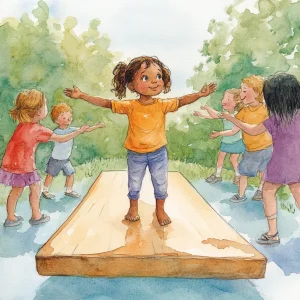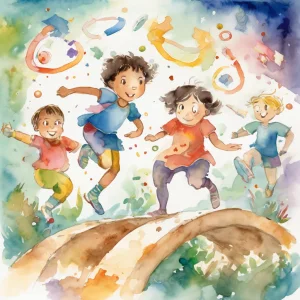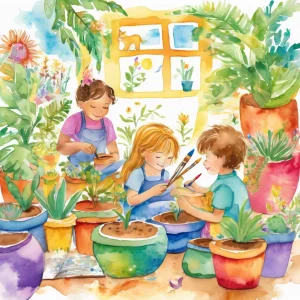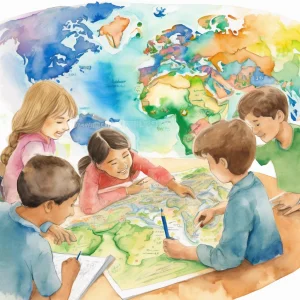Activity
Similar Activities
Whispers of the Future: Persuasive Writing Adventure
Children’s Age: 8–11 years
Activity Duration: 10 – 30 minutes
Engaging activity for 8-11-year-olds focusing on persuasive writing, career exploration, and technology experiments.
Activity Duration: 10 – 30 minutes
Balance Beam Adventure: Enhancing Coordination and Focus
Children’s Age: 2–12 years
Activity Duration: 5 minutes
This fun activity called "Balancing Act Fun" is perfect for kids aged 2 to 6. It helps improve coordination, balance, and self-regulation. You'll need a flat surface, a stable boar…
Activity Duration: 5 minutes
Adventure through the Healthy Lifestyle Obstacle Course
Children’s Age: 4–6 years
Activity Duration: 15 – 20 minutes
Engage children aged 48 to 72 months in the "Healthy Lifestyle Obstacle Course" to promote self-regulation and cognitive development through fun physical activities. Set up station…
Activity Duration: 15 – 20 minutes
Imaginative Tales: Storytelling with a Twist
Children’s Age: 3–6 years
Activity Duration: 5 – 15 minutes
"Storytelling with a Twist" is an engaging activity designed for children aged 3 to 6 to boost self-regulation, cognitive development, and play skills. Create a cozy storytelling c…
Activity Duration: 5 – 15 minutes
Dancing Around the World: Cultural Adventure Dance
Children’s Age: 2–2.5 years
Activity Duration: 5 – 15 minutes
"Dancing Around the World" is an engaging activity designed to enhance children's coordination, balance, and cultural appreciation through dance. By incorporating music, scarves, a…
Activity Duration: 5 – 15 minutes
Animal-Inspired Plant Pots: Creative Nature Creations
Children’s Age: 3–6 years
Activity Duration: 20 minutes
Children will have a blast making animal-inspired plant pots, sparking creativity while learning about nature. Gather supplies like paint, pots, seeds, and soil to set up a creativ…
Activity Duration: 20 minutes
Melodies of the Heart: Musical Genre Relay Race
Children’s Age: 7–11 years
Activity Duration: 10 – 20 minutes
An active game where children run a relay race to identify music genre pictures.
Activity Duration: 10 – 20 minutes
Enchanted Emotions Collage Journey
Children’s Age: 2–3 years
Activity Duration: 5 minutes
The "Feelings Collage" activity is designed for children aged 24 to 36 months to explore emotions and boost empathy, cognitive abilities, and creativity. With magazines, scissors, …
Activity Duration: 5 minutes
Whispers of the World: Around the World Virtual Adventure
Children’s Age: 7–9 years
Activity Duration: 20 – 30 minutes
Embark on the "Around the World Virtual Adventure," a captivating and educational journey for children to explore various cultures and innovations globally. Through this activity, …
Activity Duration: 20 – 30 minutes
Whispers of the Meadow: Ball Toss and Talk
Children’s Age: 1.5–2 years
Activity Duration: 5 minutes
"Ball Toss and Talk" is a fun activity designed for children aged 18 to 24 months to boost language skills through sports and physical play. All you need is a soft ball and a safe,…
Activity Duration: 5 minutes
Nature-Inspired Drawing Activity
Children’s Age: 8–9 years
Activity Duration: 10 – 25 minutes
An outdoor activity where children draw natural elements to foster creativity and ecological awareness.
Activity Duration: 10 – 25 minutes
Ecosystem Adventure Board Game - Nature's Quest
Children’s Age: 7–9 years
Activity Duration: 10 – 25 minutes
An interactive board game where children explore and learn about ecosystems through challenges and tasks.
Activity Duration: 10 – 25 minutes



























